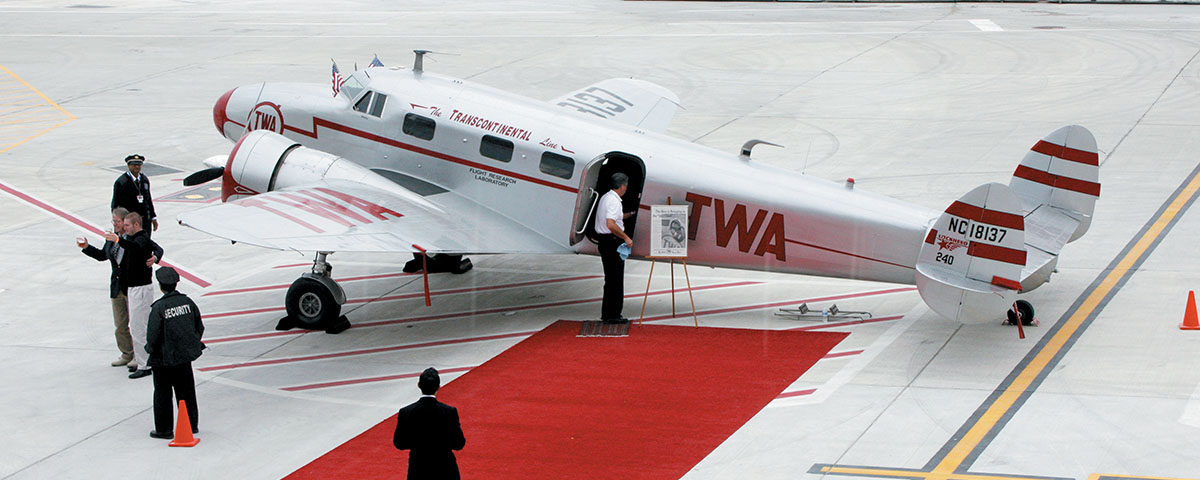The oldest surviving ex-TWA aircraft, a Lockheed 12A Electra Junior, made a coast-to-coast round trip in September to celebrate the opening of the new JFK Terminal 5. The structure is attached to the once-spectacular swooping, science-fictiony terminal originally designed for TWA by the famous Finnish architect Eero Saarinen (which remains shuttered and unoccupied). Terminal 5 is operated by JetBlue, which never had anything to do with TWA but was gracious enough to celebrate the grand old line’s 71- year heritage, from 1930 until it was absorbed by American Airlines in 2001, by sponsoring the flight of the ’37 Lockheed.
The six-passenger Electra Junior, a scaled-down version of the Model 10 Electra made famous by Amelia Earhart, is about the size of its near-contemporary Twin Beech and was never an airliner. It flew for TWA in the early 1940s as a corporate transport and high-altitude research tool, testing de-icing systems and early static-discharge technology. (The Model 12 was the first all-electric metal twin, though it unfortunately failed to make it clear that power-hungry electric de-icing was a bad idea, as it proved to be in later airline use.) In fact, it was often piloted by TWA co-founder Paul Richter Jr., whose daughter Ruth Richter Holden today coowns the airplane.
Richter Holden bought the plane sight unseen in 2005, in large part because of a vague childhood memory. And when she leafed through its original logbooks, there was the entry that proved she had once flown aboard it with her dad, as a little girl. Having helped restore the small twin to its proper TWA colors, Ruth co-piloted the transcontinental flights. Commuter airline pilot Curt Walters, coowner of the Lockheed, served as captain on the initial crossing from Santa Maria, Calif., to JFK, with Kirk McQuown piloting on the return trip, which followed the original routes of TWA’s first coast-to-coast passenger service trip.
To learn more about the Lockheed 12A and TWA’s early history, go to spiritoftwa.com.
Originally published in the March 2009 issue of Aviation History. To subscribe, click here.





